If you’re an avid user of ceiling fans in your home, it can be a hassle when your fan stops working. But don’t worry, the issue can likely be solved with simple troubleshooting.
The Ceiling Fan Stopped Working issue can often be solved with a few simple steps. The first step is to detect the issue. It could be with the remote, the fan blades, the motor, or the circuit itself.
The issues can vary from checking the circuit breaker to making sure the blades are properly balanced.
This guide will help you find the source of the issue and get your fan running again. So, sit tight and let’s begin.
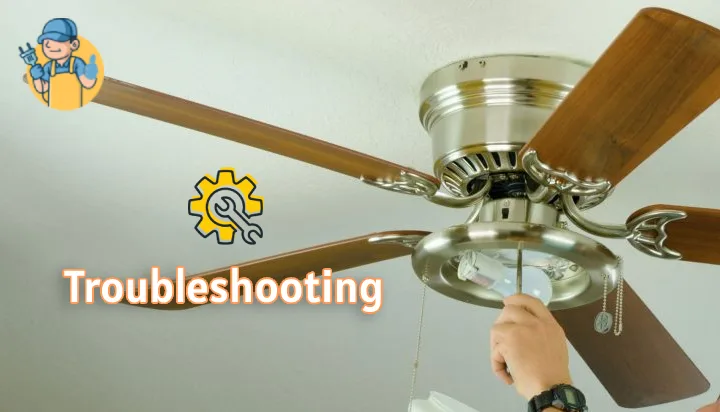
How to Troubleshoot a Ceiling Fan?
What do you do when your ceiling fan not working? Your immediate instinct might be to call an electrician. You can follow these next few steps carefully to potentially fix the problem yourself:
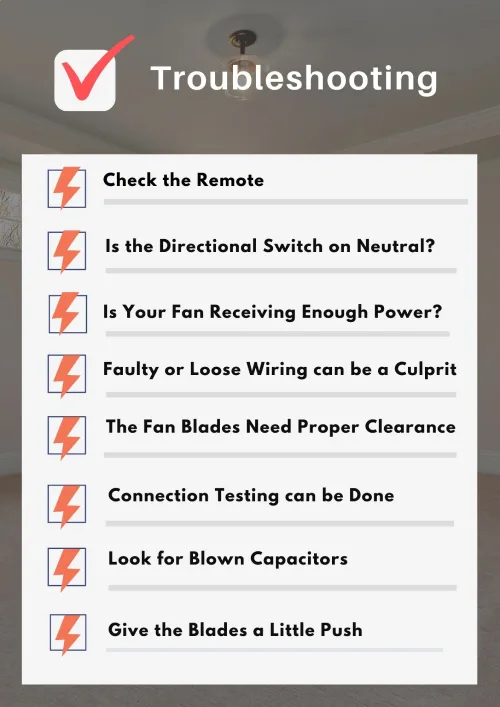
Check the Remote
For starters, check if your remote has fresh working batteries. If fresh batteries do not work, do not worry. You can follow a few troubleshooting steps if your Casablanca, Harbor Breeze, or Hunter fan remote not working.
From time to time, the remote might also need resetting. “How do you reset a ceiling fan remote?” you might ask. We would suggest you check your user manual.
Is the Directional Switch Neutral?
Most models of ceiling fans will have a switch that can reverse the direction of the spin. This switch will usually have the third position called “neutral”.
This position is something you don’t want if your goal is to make the fan spin. Look for this switch and check its position to see if this is the issue.
Is Your Fan Receiving Enough Power?
Sometimes due to electrical issues, your fan will not receive enough power from the wall.
Simply, if the lights are not working, contact an electrician as soon as possible, and if it is, move on to the next method.
Faulty or Loose Wiring can be a Culprit
You need to figure out how to access the motor housing. It might sometimes be necessary to remove the light kit from Harbor Breeze ceiling fans.
Fans with mounting brackets are very easy to work on; however, if you have a flush-mount ceiling fan, it can get complicated.
After you locate the motor inside the housing, look carefully at all the wires to see if any of them came undone. The chances of this happening are not slim at all as the fan is a continuously moving appliance.
The Fan Blades Need Proper Clearance
If the motor faces blockage or hindrance, some models will switch the motor off while others will try and fail.
Finding something jamming the blades will easily solve the problem at hand. We want to stress how important it is to do this carefully.
Connection Testing can be Done
Some among you with a huge toolshed will have a voltmeter on hand. This step is only applicable to them.
Test out the wires to see check if the motor is receiving electricity. If you see a reading on your meter, it is probably time to change the motor as it probably has died.
Look for Blown Capacitors
Overheating is one of the most common culprits when it comes to damaged ceiling fans or fan motors.
There are a few capacitors around your motor, and overheating for a prolonged amount of time will typically blow these capacitors.
You can also look for a pull cord with a small box connected to one end inside the motor housing. Replacing the capacitor is very painless and cheap.
Ordering one corresponding to the model of your fan is easy enough, and the replacement only takes 5-10 minutes.
Give the Blades a Little Push
Your ceiling fan has something called a flywheel. With your ceiling fan, a flywheel will spin the blades. Reach up to the blades and give them a gentle push in any direction, and unless the blades keep spinning
You might need to replace your flywheel. Most fan models will have aftermarket flywheels available for cheap.
Occasionally, however, your blades not spinning might also mean the bearings have given up. Though it is very rare, it can happen.
How Important is it to Properly Maintain a Ceiling Fan?
Proper maintenance and care of a ceiling fan are essential for ensuring that it operates safely and efficiently. By regularly cleaning and inspecting the fan, you can help to prevent problems and extend its lifespan.
One of the main benefits of proper maintenance and care is that it can help to prevent accidents and injuries. A dirty or poorly-maintained ceiling fan can be a safety hazard, as it can become imbalanced or malfunction in some way.
This can cause the fan to shake or wobble, potentially leading to accidents or injuries. By regularly cleaning and inspecting the fan, you can help to ensure that it is stable and safe to use.
In addition, proper maintenance and care can help to extend the lifespan of a ceiling fan. By cleaning and maintaining the fan regularly, you can help to prevent wear and tear and keep it in good working order for longer.
By cleaning and maintaining the fan regularly, you can help to prevent accidents and injuries, improve its performance and efficiency, and extend its functionality.
This can save you money in the long run, as you won’t have to replace the fan as often. Overall, proper maintenance and care of a ceiling fan are essential for ensuring that it operates safely and efficiently.
Summary
Once you’ve gone through the troubleshooting process, your ceiling fan should be up and running again. Hopefully, this guide was able to help you get your fan back in working order with minimal effort.
If you’ve followed the steps in this guide and your ceiling fan still isn’t working, you should consider calling an electrician. That will ensure that the job is done properly and your fan is safe to use.

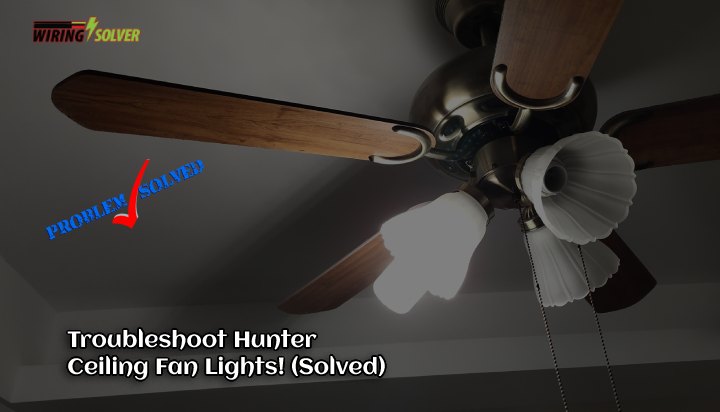

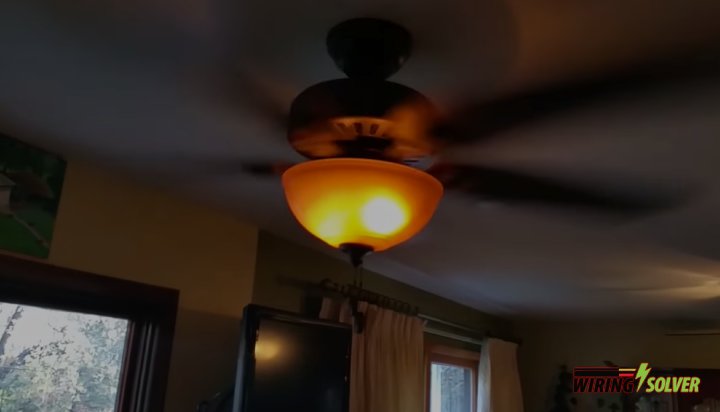
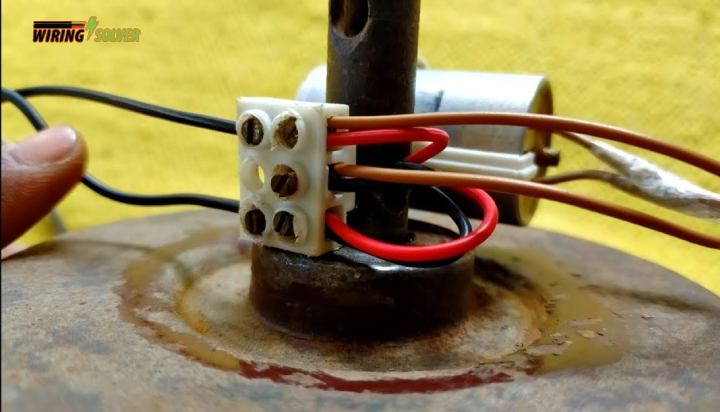
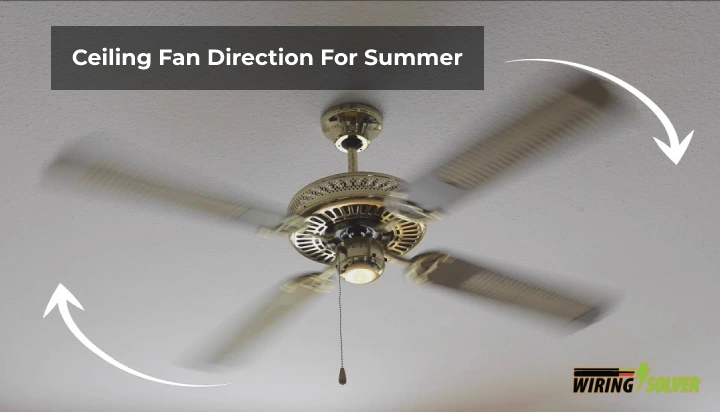
![Hampton Bay Remote Ceiling Fan Troubleshooting [Solved]](https://wiringsolver.com/wp-content/uploads/2022/10/Troubleshooting-a-Hampton-Bay-Remote-Ceiling-Fan.jpg)